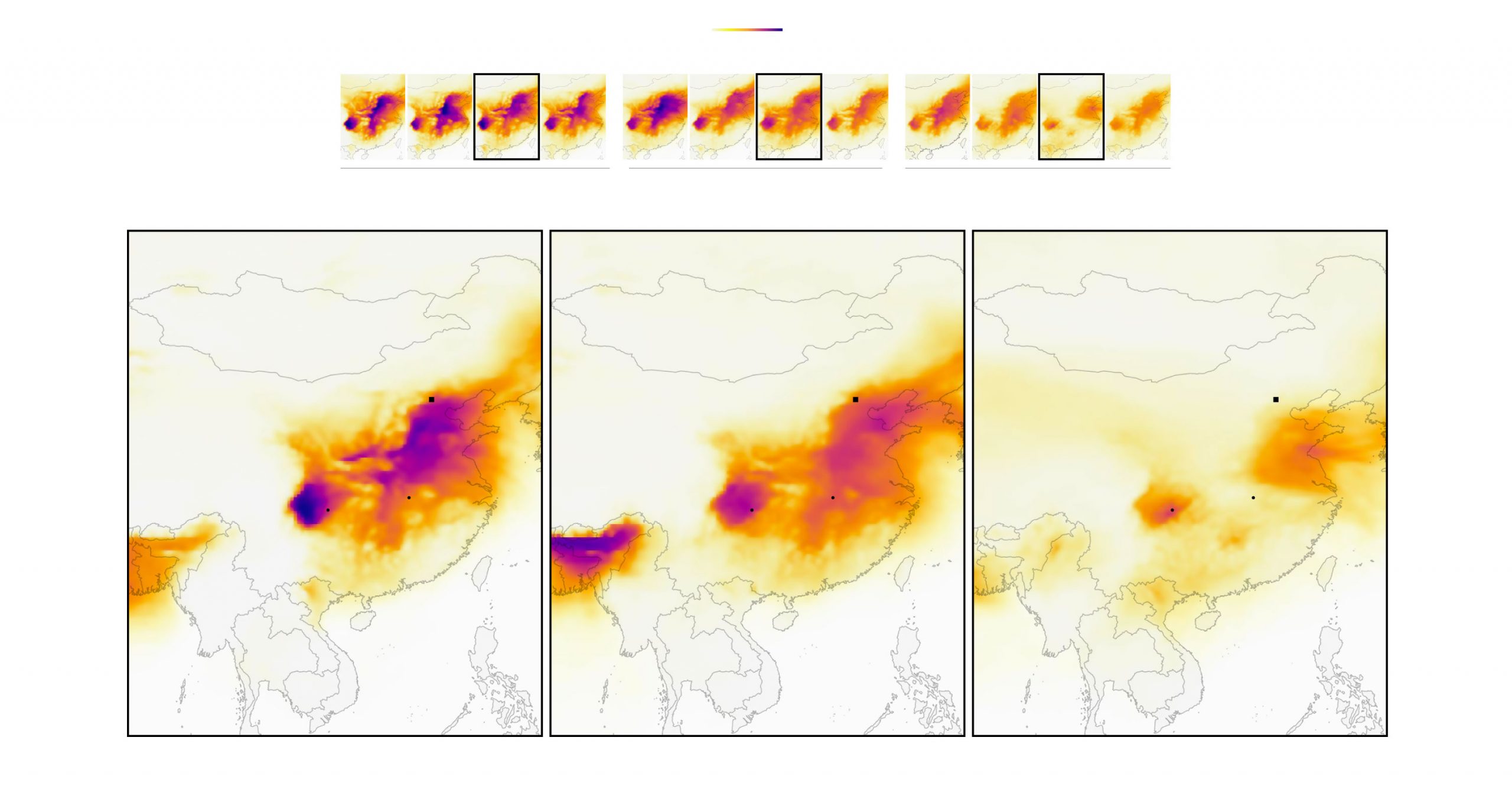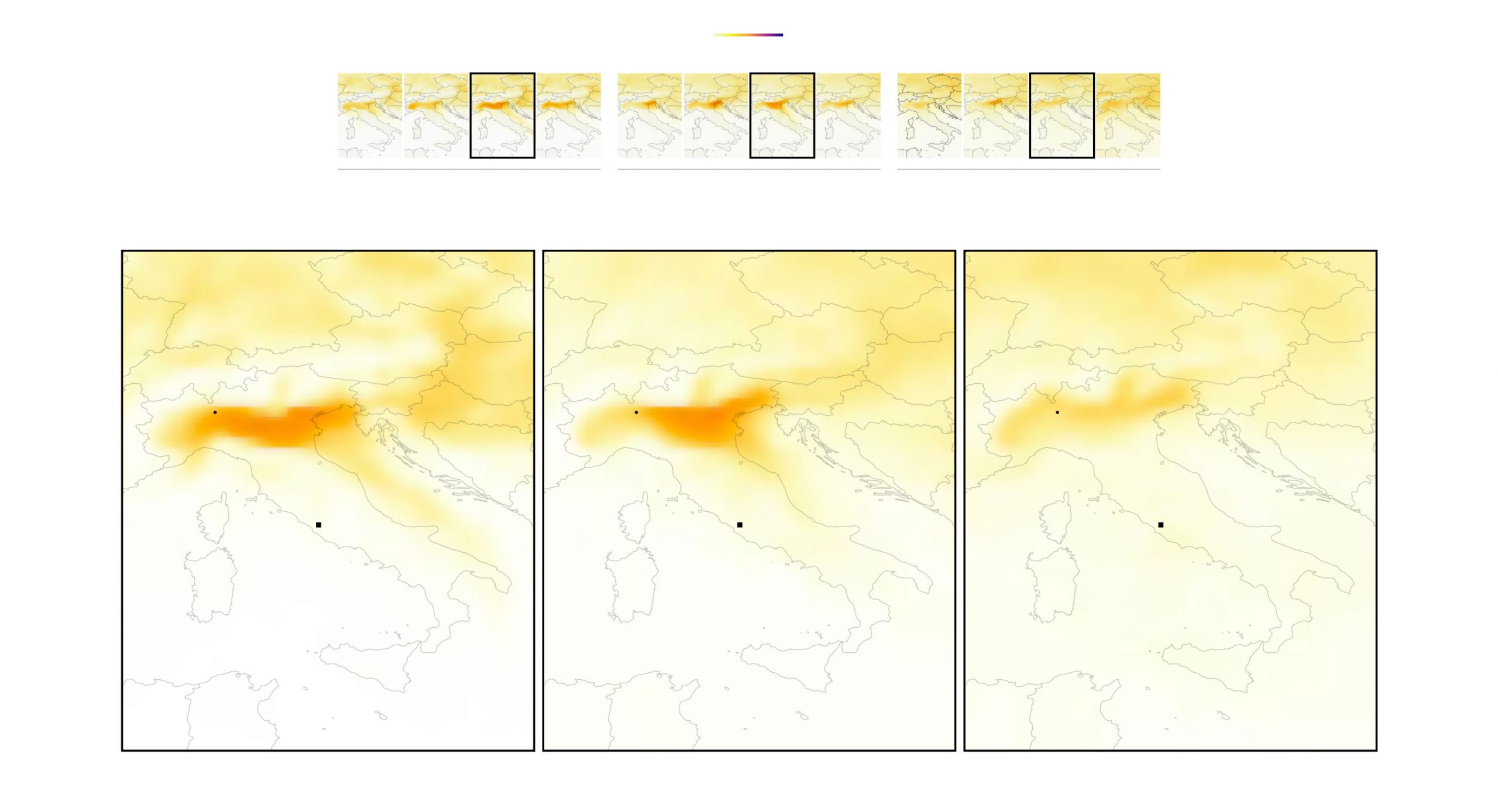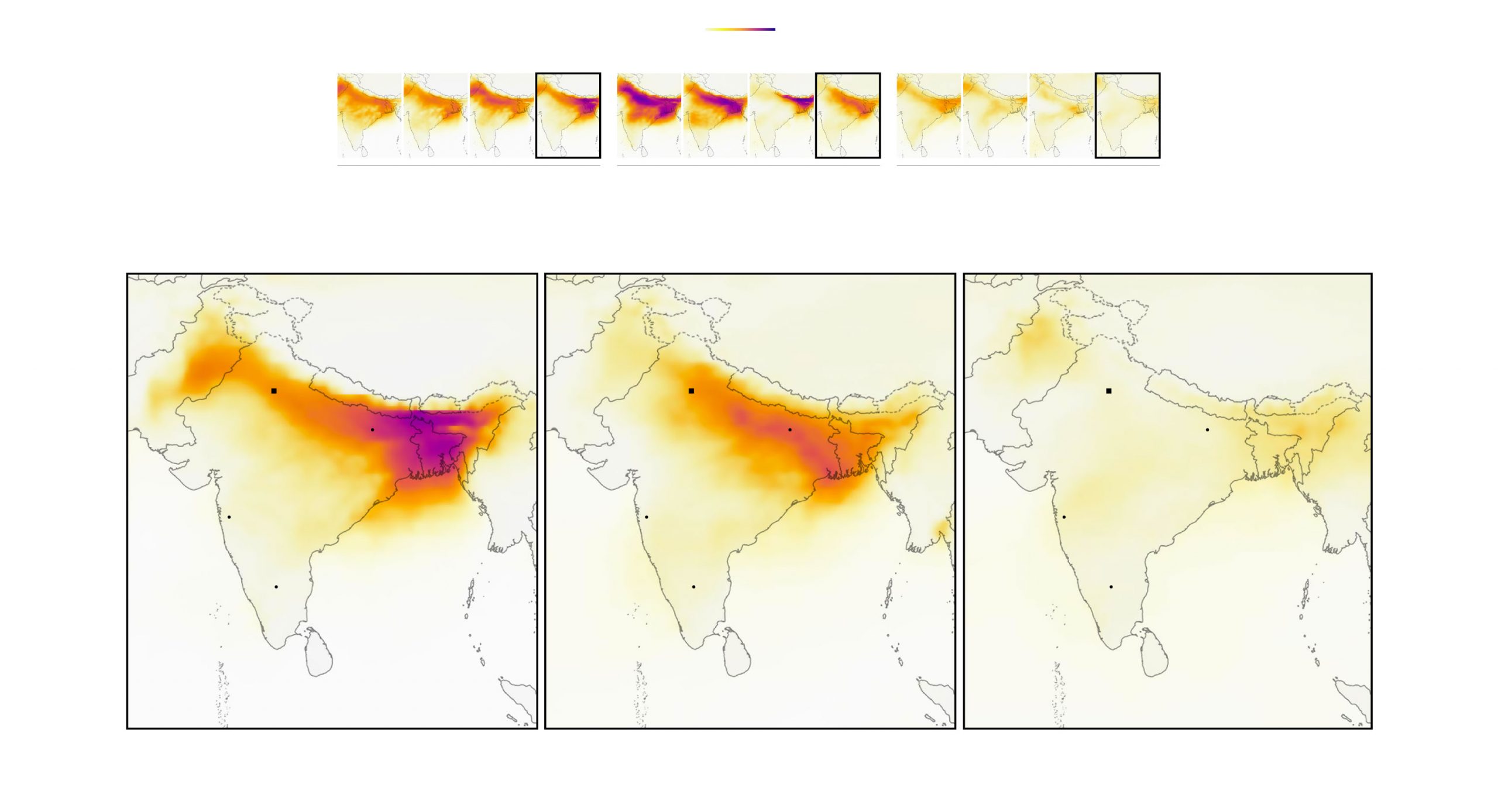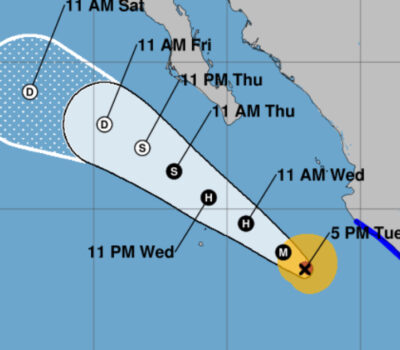To contain the coronavirus pandemic, billions of people have been told to stay at home. In China, authorities placed almost half a billion people under lockdown, the equivalent of nearly 7% of the world’s population. Many other countries have since taken similar measures, initially in hard-hit Italy and Spain, and more recently in the United States and India.
The restrictions have sent financial markets into free fall. But they have also given residents in some of the world’s most polluted cities something they have not experienced in years: clean air.
Reuters visualisations, based on data from NASA’s Global Modeling and Data Assimilation team, show how concentrations of some pollutants fell drastically after the lockdowns started.
Satellite observations record information on aerosols in the atmosphere. NASA’s model is then able to provide estimates of the distribution of these pollutants close to the Earth’s surface.
CHINA
The maps below show how levels of PM2.5 nitrate fell in China’s Hubei province after the government imposed travel restrictions. Nitrate is one of the components that make up PM2.5, tiny particles, about 3% of the diameter of human hair, that can penetrate deep into the lungs and enter the bloodstream, leading to heart disease, strokes or cancer.
Nitrate aerosols are formed from nitrogen compounds, which can be emitted by human activities, especially burning fuel and diesel.

“We may soon learn how much of an impact this temporary pause in pollution has had on human health and the environment, but the clearest takeaway from this event is how satellite measurements of nitrogen compounds can be used as an indicator of economic activity,” said Ryan Stauffer, a research scientist at NASA’s Goddard Space Flight Center.
Ground station metrics from Wuhan, where the pandemic originated, show how certain pollutants including nitrogen dioxide were at record lows during the first few months of the year.
Some of the major sources of nitrogen dioxide are vehicle exhausts, power plants and wastewater treatment plants.
Scientists say nitrogen dioxide pollution has been steadily decreasing over the last few years. However, the lockdown may have contributed to this year’s drop.
“Most important to health would be reductions in PM2.5, as that is the single pollutant most associated with severe adverse health effects, such as heart attacks and death,” George D. Thurston from the New York University School of Medicine, told Reuters.
Beyond China, many other countries have experienced big drops in PM2.5 and other pollutants in recent months.
SOUTH KOREA
In early March, South Korea reported a large increase in COVID-19 cases. Since then, ground stations have been measuring the lowest levels of some pollutants for seven years. Although South Korea did not impose major restrictions on residents, changes in daily activity could have contributed to the drop.
ITALY
Similar patterns unfolded across Italy following the introduction of a nationwide lockdown on March 9. Restrictions had already been implemented in late February in some northern regions, where COVID-19 cases had surged.
The industrial belt across northern Italy often experiences high levels of air pollution, but estimates show otherwise this year.

Of the pollutants that fell most significantly in northern Italy, nitrogen dioxide stood out, according to data recorded at ground stations. Bergamo, one of the provinces most affected by the virus, has experienced improvements in air quality.
INDIA
Every winter, New Delhi and other big cities in the north are enveloped in a blanket of smog as farmers burn crop residue. The air tends to clear a little in spring.
However, in the first few months of this year, India experienced a significant decline in some pollutants. The lockdown imposed by Prime Minister Narendra Modi on the country’s 1.3 billion people could be a major contributing factor. However, there may also be other factors impacting air quality, according to Pallavi Pant, an air quality scientist at the Health Effects Institute in Boston.
“Air pollution levels are often influenced by local meteorology, like temperature or wind speed. Several early analyses are showing declines in air pollution in regions where shutdowns have taken place. However, any such analyses should consider all relevant factors.” Pallavi Pant told Reuters.

Beyond improvements in outdoor air quality, scientists are also curious how lockdowns have affected indoor air quality, with millions of people staying at home for far longer than usual.
“As we continue to talk about improvements in outdoor air quality, people are spending a lot more time indoors and the exposure patterns for indoor air pollution might be different at this time too,” said Pant.
Sources: Global Modeling and Assimilation Office (GMAO), NASA. China National Environmental Monitoring Centre. Wuhan Environmental Protection Bureau, Hubei Environmental Protection Agency. U.S. Embassy and Consulates’ Air Quality Monitor in India. India Central Pollution Control Board (CPCB). Delhi Pollution Control Committee. South Air Korea Environment Corporation, Seoul Clean Air Pollution Information. World Air Quality Index Project. Regional Agency for Environmental Protection (ARPA) Lombardy.
By Marco Hernandez
Editing by Matthew Green and Simon Scarr
To contain the coronavirus pandemic, billions of people have been told to stay at home. In China, authorities placed almost half a billion people . . .












